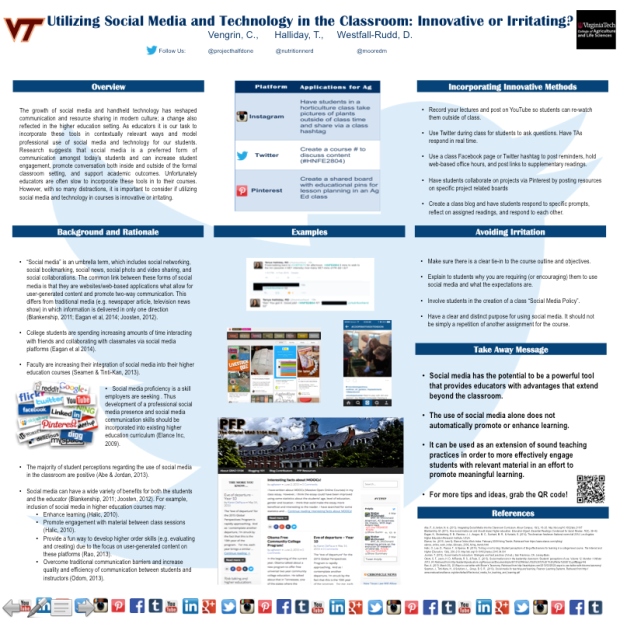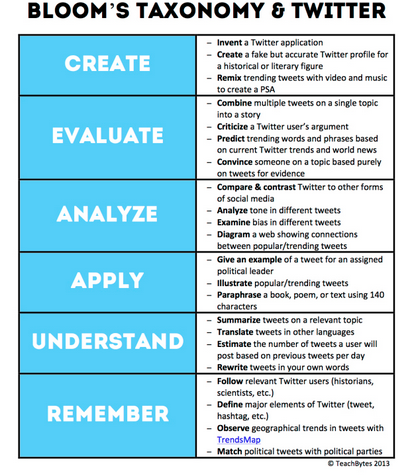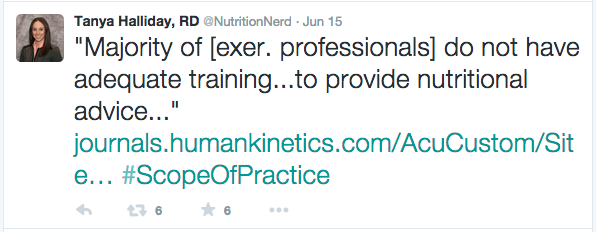SoMe [That’s Social Media, folks!] Tips and Tricks

Tanya Halliday (@NutritionNerd) and Courtney Vengrin (@ProjectHalfDone) Virginia Tech
This blog is posted in conjunction with our poster at the NACTA conference.
Tanya and I are in the CALS GTS program together and have a mutual love for teaching excellence, (me in Ag Ed, her in Nutrition), social media (need to track us down? Check our Twitter feed, blogs and email, info linked at the bottom), lifting weights, and coffee!
So without further ado, here are some of our favorite Social Media tips!
- Check the #!
- Ok guys. I’m (Courtney) going to own up to this one. I was posting a picture to Instagram of my awesome tomatoes that I grew in my container garden. I was super proud of them and naturally I wanted to add some #’s and share the gardening love! I used #’s like #virginiagardens #gardening #containergarden and…. #growyourown. FYI…one of those is not for vegetables…I’ll just leave it at that. But the point is, check the hashtag. If you’re going to engage with Twitter, Facebook, Instagram or any other social media that uses a tagging system make sure your tag is representative of what you intend it to be. You will probably be fine with hashtags you generate for your specific course like #ENG2040 for an English class, but still it would be a good idea to check first! It’s possible another tech-savvy educator is already out there and tweeting away!
- Write SoMe objectives using Blooms Taxonomy.
- Want to assess understanding, while also having students work on being concise? Have them summarize a journal article in a 140-character tweet. It’s certainly not an easy task to do!
- Need a refresher or Bloom’s Taxonomy Action verb cheat sheet? Several exist, but to help you get started, here is a link to one: http://www.teachthought.com/learning/249-blooms-taxonomy-verbs-for-critical-thinking/
- For some really amazing tips, check out Techbytes who makes AMAZING graphics like the one seen here
- Don’t assume your students are familiar with the SoMe platform(s) you are asking them to use. Take the time to walk them through setting up an account, learning the lingo, and posting to the platform before the official “grading” period begins.
- Post regularly
- Before taking your social media in to the classroom you need to be able to commit to engaging with social media on a regular basis. Lead by example for your students. If you’re having trouble remembering to post, set a reminder in your calendar or write it in your planner. Set a goal for how often you should post.
- Next, consider how often you expect students to post. Is it twice a semester, twice a unit, or twice a week? Set realistic expectations based on how influential you expect social media to be in your course.
- Post relevant articles or popular press
- If you’re not sure what to post, find an article or news release that relates to your course. Comment on an article you read recently. Find a blogger who discusses your topic and follow them. They certainly won’t mind you promoting their blog to your class!
- Be an example for your students
- In all that you do on social media, remember that you are an example for your students. You are also putting yourself in public, so consider your social media account to be an extension of your professional presence online. Show your students what it looks like to be a professional. You can even incorporate appropriate social media behavior in to class discussion, highlighting appropriate posts and emphasizing how many potential employers WILL look at your online presence and make a judgment accordingly.
- To help keep the posts and conversations professional, while also respecting your students’ privacy, we feel it is best to develop a social media policy up front. Create this document with your students. If your school has a code of conduct, use that as a starting point!
- Finally, we will all make mistakes as we interact on Social Media platforms. Your students may tweet inappropriately. You may publish an inaccurate blog post. Don’t let the fear of making mistakes keep you – and your students – out of the conversation. Acknowledge these errors, lapses in judgement, etc; learn from them; and move on!
- Network with other professionals
- Follow other people in your field! Follow The Chronicle and other academic accounts. Share their posts to your account! You can make some really amazing connections just by spending a few minutes a day on social media
- Tanya here: I have to admit, I was very anti-social media for quite a while. At one point I even deleted my personal FaceBook page because I just didn’t see the relevance. However, after getting annoyed with all of the misinformation on-line related to nutrition and exercise, I decided to start my own blog. From there, I began writing a nutrition column for a popular running blog and was quickly “encouraged” to GET ON TWITTER! So, I did. Reluctantly. However, this has been one of the best decisions I have made for my professional life. I have made connections with other dietitians, graduate students, and even some of the TOP researchers in my field simply by putting myself out there on social media. In 2012, my on-line presence resulted in an invitation to the Gatorade Sports Science (GSSI) Satellite Lab in Bradenton, FL as part of their Sports Fuel Expert Summit. Not a bad way to spend a few days! [Link to that post here: http://dinedashdeadlift.com/2012/07/26/gssi-lab-visit-new-product-alert/]
- Promote your own work
- What else is social media other than self-promotion? Don’t be shy! Promote your blog. Tell people that you’re excited about your conference presentation. Let everyone know your article is going to be published in the Journal of Awesome Educators!
- Maintain an online presence – Control what is out there
- The biggest thing for you as a growing professional and for your students is to control what is out there!
- Your on-line presence is going to build itself anyway. Deliberate and purposeful engagement on SoMe platforms lets YOU drive it. I remember as an undergrad when FaceBook first came out, administrators, faculty, coaches, all told us “Make sure nothing bad comes up when your name is “Googled”. I don’t think that’s enough anymore. Now, I think it is imperative that you be easily located on on-line searches, and are known as having a positive and professional presence!
- I’ll be doing a post soon about Google-ability. Stay tuned for more on this!
- Should social media use be mandatory in your course?
- Great question – and one you can probably answer better than us! Know that the likelihood of having students engage as much as you would like if it is NOT mandatory is slim. You’ll perhaps have some adopters, but don’t expect your students to automatically create a dynamic online community without incentive (e.g.- a grade) from you. That being said, think about the time you can devote to reviewing the SoMe contributions. If it is an integral portion of your class, then go ahead and devote the time to it and make it mandatory. If you’re just dabbling, or it’s ‘just for fun’, then spend less time with it and make it an option. With your purpose in mind, along with the realities of the associated time cost, you can then think about organization, tracking, and assessment
- Organizing, Tracking, and Assessing SoMe in your course
- Organization: Consider how you will organize your requirements for students, how the social media will be organized in the context of your course, and how you will utilize all of the data generated through these communications!
- Tracking: If you’re utilizing a platform with hashtags (Instagram or Twitter) several options exist for tracking that hashtag. (Here’s one example). If you’re having students blog, you may not have time to read all of their blog posts every week. This could be a chance to grade based on the bigger picture. Each week, browse the comments – if you see a student post that they are confused about another student’s post, go in and see what that student wrote about. Offer guidance as needed. If a student was particularly engaged in class, check out their blog post. Chances are they wrote something phenomenal, and you can comment as such – and share as an example with the rest of the class. Using Pinterest? This one may be better assessed at distinct time points throughout the semester.
- Assessment: Just like you have criteria –and perhaps a rubric – for other assignments in your course, create one that is specific to your purpose and platform of choosing so you can more objectively assess student’s use.
- Resources
Want to get in touch with us? Here’s the info one last time:
- Tanya Halliday
- Twitter: @nutritionnerd
- Email: tanyamh@vt.edu
- Blog: dinedashdeadlift.com
- Courtney Vengrin
- Twitter: @Projecthalfdone
- Email: cvengrin@vt.edu
- Blog: projectshalfdone.wordpress.com
Happy tweeting!!



I’m really looking forward to this!!